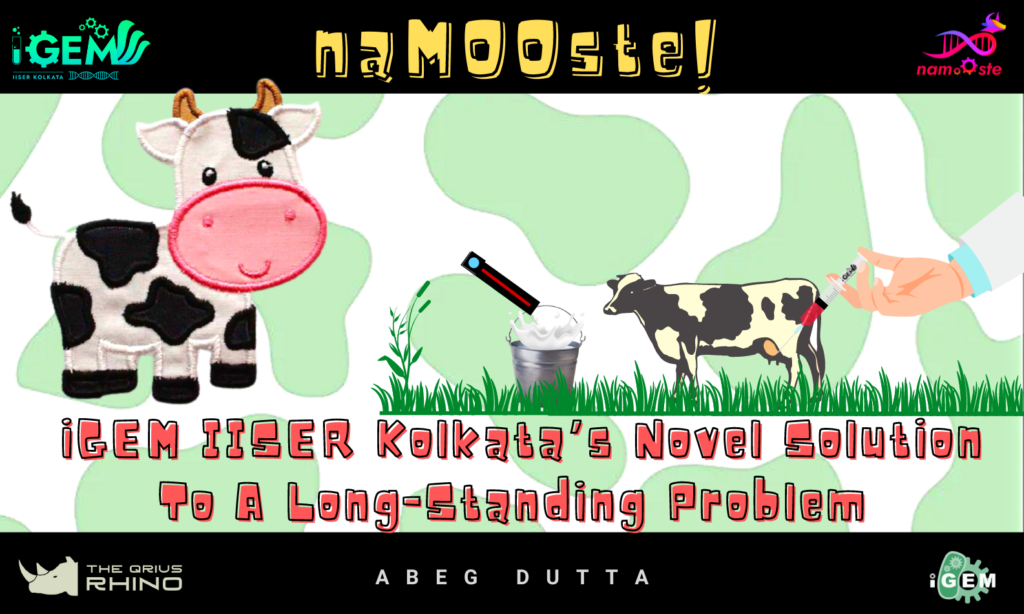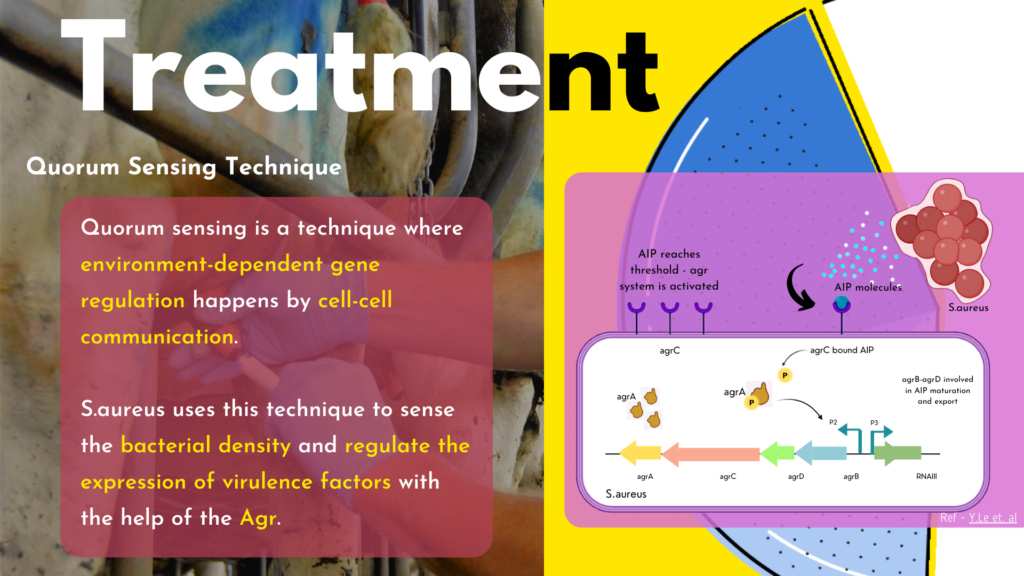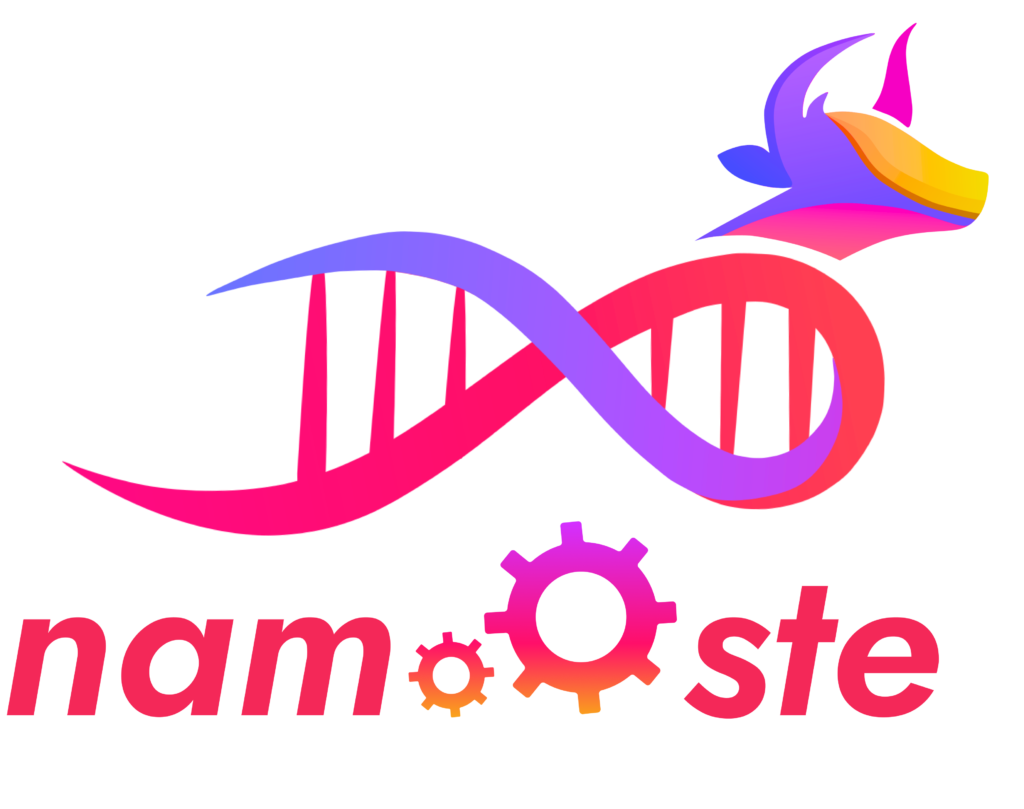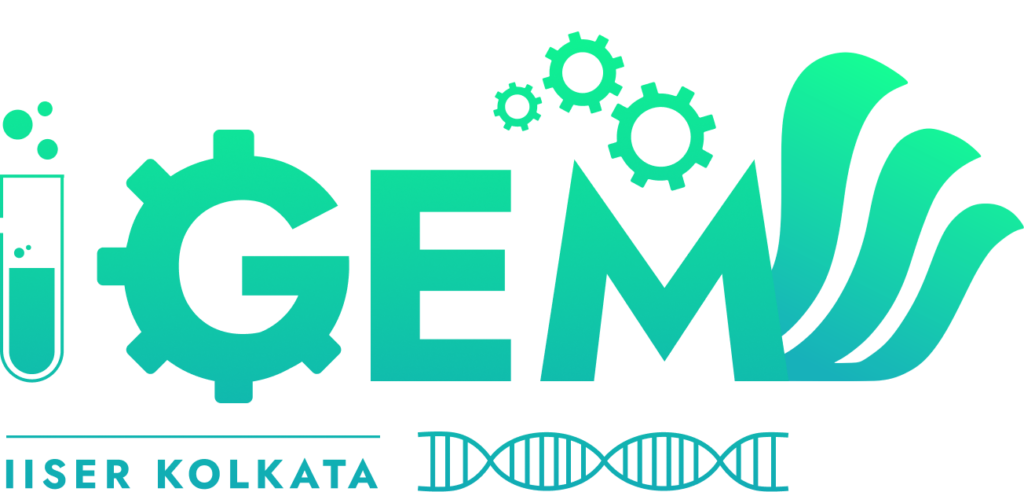iGEM IISER Kolkata’s Novel Solution To A Long-Standing Problem

Designed by Soumi Bhattacharyya and Diptatanu Das.
Have you ever wondered how massive the Indian dairy industry is? From your morning cup of coffee to the savoury chocolates decorating the shelves of shops, milk is almost everywhere around you! The Indian dairy industry is undoubtedly massive, sustaining the world’s largest producer as well as consumer of milk. Yes, you read that right! This South Asian nation with more than 1.3 billion people is responsible for 22% of the global milk production.
In recent years, developing nations have undergone a dramatic rise in their share of the global dairy industry despite being plagued by issues like poor animal feed and a high prevalence of diseases. In 2020, milk contributed 4.2 % to India’s GDP and furthermore registered an annual growth rate of 4.9%. This makes the dairy industry, with a specific focus on India, an indispensable economic powerhouse sustaining millions of lives, directly and indirectly, involved in it. As per the NITI Aayog working group 2018 report, milk production in India will increase to around 330 million tonnes in 2032-33, and milk supply will exceed milk demand by 38 million tonnes in 2032-33!
So what exactly is the problem?
“It has long been an axiom of mine that the little things are the most important” – Arthur Conan Doyle
As of now, there is ostensibly no scope for worries. However, beneath the ever-expanding dairy industry lies a disease, bovine mastitis, which threatens the very foundation of the industry. Most of us are not even aware of the disease which tremendously affects the milk quality ( decline in potassium and casein levels) and quantity produced by a cow. Mostly caused by a bacterial infection in the udder, this silent monster causes a persistent inflammation in the udder parenchyma due to the release of leukocytes. It is the costliest disease in the industry and costs about 2 billion USD to the US annually. However, in a developing country like India, not only are people unaware of the disease but improper handling leads to invisible outbreaks in herds which severely affect the poor and small farmers.
The disease progresses in gradual steps from a sub-clinical stage to a clinical stage which has mild, moderate and severe sub-stages. The sub-clinical stage is mostly invisible of symptoms and they only show up in the clinical stage. The mild stage shows abnormal milk quality with flakes as well as reduced quantity. The moderate and severe stages are accompanied by udder inflammation and eventual fever or anorexia. The disease is untreatable at this stage and the cow is usually culled to avoid financial loss. The disease is treatable at the sub-clinical stage but detection at this stage is very difficult as the current methods of testing are not full-proof and they only account for the somatic cell count which is usually high in lactating cows as well.
Sadly, even we are not spared from the harmful effects of this disease. Humans ingesting raw milk or improperly pasteurized milk of mastitis affected cows can lead to the development of a lot of health problems. Heavy use of antibiotics for treatment result in antibiotic residues in the milk causing sensitization of normal individuals leading to the development of AMR in our commensal bacteria. If left unchecked for a long time, it may even lead to the occurrence of epidemics or pandemics.
What do we propose to solve this problem?
“I was taught that the way of progress is neither swift nor easy” -Marie Curie
The 2021 iGEM team of IISER Kolkata aims to strike at the root of this serious problem plaguing the dairy industry. Our project serves as a two-edged sword for both detection and treatment of the disease. Our easy-to-use, real-time, handy colourimetric detection kit would detect bovine mastitis at the sub-clinical stage (Clinical mastitis is mostly untreatable in cows, hence the timely detection of sub-clinical mastitis will prevent the cow from going into the stages of clinical and recurrent mastitis) by gauging the presence of certain miRNA sequences which get upregulated during the onset of the disease and their cleavage.
We use CRISPR Cas13, a type II class CRISPR along with Csm6 enzymes to cleave these miRNA thereby generating a signal. The signal is visually detected using a microfluidic paper-based device – μPAD-based diagnostic. For the treatment of bovine mastitis, we are focusing on two major pathogens that are responsible for bovine mastitis in India, Staphylococcus aureus and Streptococcus uberis as these are the main pathogens causing the infection.
We intend to exploit the cell-to-cell communication system of quorum sensing in bacterial populations to build an antibiotic-free killing device for bovine mastitis. Firstly, the Agr system in S.aureus helps to upregulate virulence factors such as alpha-toxin and delta hemolysin and stimulates the progression of the disease. Now, this quorum-sensing system can be exploited by using it to detect pathogenic cells and killing them, which we propose to do by cloning this signal transduction system in our chassis organism. Therefore, our chassis will then be able to sense nearby S.aureus cells.

Source: Team iGEM IISER Kolkata 2021
It is now the time to decimate the pathogen! For that, we shall employ a suitable bacteriocin (bacteriocins are toxic peptides produced by bacteria to inhibit the growth of closely related bacterial strains) along with two other enzymes, one of which eliminates the bacterial biofilm and the other lyses our chassis organism such that the bacteriocin and DnaseI, our biofilm-destroying enzyme, are released into the extracellular space. These two weapons now will ensure that the pathogenic S.aureus cells are eliminated and the cow can be cured of mastitis. This method of treatment is expected to be injectable into the teat canal of the udder, thereby being administered in situ.
The choice of our chassis organism is such that it is probiotic and resistant to Nisin, the designated bacteriocin which targets S.aureus populations. This plan ensures that we are not just targeting the pathogen per se but also the biofilm which is a major component of bacterial infections. The biofilm usually leads to a resurgence of the infection if it is not dealt with, which is why the role of Dnase I becomes more important than ever!
How would this affect the dairy industry?
“Much of the antibiotic use in animals is unnecessary and inappropriate and makes everyone less
safe” -Center for Disease Control and Prevention
In the absence of either effective testing techniques or effective decimation techniques of the bacteria that cause the disease, these infections largely progress unnoticed and the only treatment available for mastitis is the administration of broad-spectrum antibiotics that are rampantly used in the dairy sector without any alternative. This not only eventually leads to the death of the cow but leads the causative bacterial agents of the disease to become antimicrobial resistant. In the coming years, this would become a major problem as bacteria would evolve into superbugs, becoming immune to treatment. Novel antibacterial therapeutics is the need of the hour.
The antibiotics unnecessarily administered to cows might end up in milk products as quality checks are often poor in small farms. This implies a significant antibiotic load in our dietary milk products which would inevitably lead to the development of antibiotic resistance in our bodies as well! In a way, both cows and humans as well are at risk of developing substantial antibiotic resistance. Our project not just provides a possible path to eliminate the use of antibiotics; it also provides a way to help several small farmers who are not treating their cows due to the high costs of veterinary healthcare. The option to cure a cow rather than culling it would go a long way in safeguarding the welfare of animals as well, an area often ignored in the greater pursuit of financial profit from animals.
Bovine mastitis has been a disease that hasn’t got its fair share of attention. The iGEM team here
aims to bring an end to this by bringing forth a full-scale project on this disease which has been
silently harming the dairy industry over the years.
“And these little things may not seem like much but after a while, they take you off on a direction where you may be a long way off from what other people have been thinking about” – Roger Penrose
By,
Abeg Dutta (BS-MS student and iGEM 2021 team member, Indian Institute of Science Education and Research Kolkata)
Team wiki: IISER Kolkata iGEM 2021
The Team:

Source: Team iGEM IISER Kolkata 2021
- Lekshmy Prakash
- Anshuman Jaysingh
- Debdeep Chatterjee
- Debsruti Biswas
- Shubhamay Das
- Soumi Bhattacharyya
- Sreyash Borkar
- Adrija Adhikary
- Udit Ghosh
- Sourin Chatterjee
- Abeg Dutta
- D Nivedaa
References :
- Landes, Maurice; Cessna, Jerry; Kuberka, Lindsey; Jones, Keithly (1 March 2020). “India’s Dairy Sector
Structure, Performance, and Prospect”. USDA ERS. United States Department of Agriculture, Economic
Research Service. Archived from the original on 18 August 2020. Retrieved 21 August 2020. - http://www.fao.org/dairy-production-products/production/en/
- Jones, G. M.; Bailey, T. L. “Understanding the Basics of Mastitis”. Virginia Cooperative Extension. Archived
from the original on 2 November 2019. Retrieved 4 February 2010. - Department of Animal Science. “Mastitis in Dairy Cows” (PDF). MacDonald Campus of McGill
University. Archived from the original (PDF) on July 8, 2003. Retrieved 4 February 2010.
About the author:

Abeg Dutta is a life sciences enthusiast interested in developmental biology and epigenetics. He is an avid reader of pop-science literature and fiction. When not invested in reading, he is either sketching or scribbling lines of poetry. Apart from being a connoisseur of tea, he is also an avid enthusiast of history and geopolitics.
This is his second blog for TQR!
Collaboration:


This blog is a part of Science Communication by iGEM IISER Kolkata 2021 Team. They are a bunch of undergrads from diverse academic backgrounds ranging across different fields of science! United by their love for science especially synthetic biology, they aim to create an inexpensive curative strategy as well as detection strategy for bovine mastitis!
The idea is to develop a vaccine that can target and kill the causative agents. The disease is normally prominently detectable when it is already at a severe stage. Thereby, the team is even using biotechnological strategies to develop a colourimetric detection kit that can help diary farms identify the devil growing inside their cows even before things get worse.
The project has already been recognised globally by various awards by leading organisations in this field. Get more details of their project in the upcoming blogs.